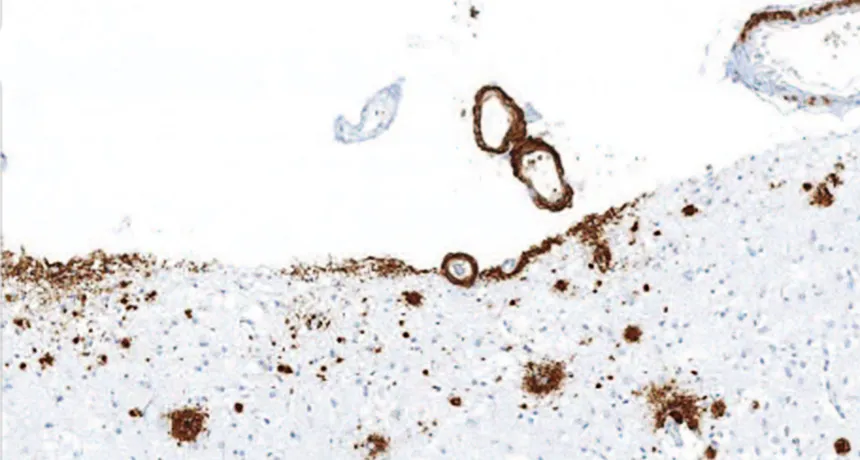Misfolded proteins implicated in more brain diseases
Alzheimer’s, other disorders show similarity to Creutzfeldt-Jakob disease and other prion infections

BUILDUP Amyloid-beta (brown) accumulated in the front of the brain in a person who received injections of cadaver-derived growth hormone as a child, suggesting that the injections were contaminated with A-beta.
Z. Jaunmuktane et al/Nature 2015